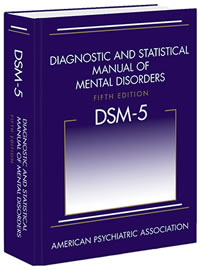Data are perceived by some as a kind of currency, a source of boundless knowledge, with the potential to prevent suffering and death. However, taking a closer look at the etymology of the word prompts careful reconsideration of our assumptions about – and uses of – data in the context of psychiatry.
From Latin, ‘data’ is the plural of ‘datum’, defined as ‘something given’. This definition gives the impression of data as the lowest level of abstraction from which statistics are collected for organisation and analysis by scientists; the basis for reasoning or calculation. Much of the fascination of statistics lies in the assumption that abstract measures summarising large tables of data must express something more real and fundamental than the data themselves. For example, in Behavioural Genetics we use factor analysis to reduce a complex system of correlations into fewer dimensions, and create unobserved ‘latent’ variables in order to search for underlying structure. This corresponds with the positivist philosophy of an underlying objective and empirically accessible reality.
However, in many cases, data do not exist in any ‘pure’ sense – they are not ‘given’ at all, but determined by theory and shaped by the categories we use.

This fallacy of reification – i.e. making something real, to the extent of confusing a model with reality – is especially pertinent to research investigating the etiology and structure of mental health problems like anxiety. Mental health problems cannot be measured and quantified as easily as most physical disorders can – we rely on self-reports of symptoms such as abnormal experiences and beliefs, rather than ‘objective’ biomarkers. Little is known about the etiology of neuropsychiatric disorders, and it is even unclear whether etiology helps to clarify the validity of our constructs.
Several lines of evidence undermine the validity of ‘anxiety’ as a category. First, it is not easily separated from other conditions, particularly depression. The majority of people with a principal diagnosis of generalised anxiety disorder (GAD) have at least one additional diagnosis. The diagnostic manual used by clinicians (DSM-5) classifies mood and anxiety disorders as separate conditions, yet ~60% of individuals with major depressive disorder (MDD) report a lifetime history of one or more anxiety disorders (2) and the genetic correlation between GAD and MDD from twin research is one (6). A large study of DSM anxiety and mood disorders found only 5% comorbidity when diagnostic rules were strictly followed, but 90% ignoring this diagnostic hierarchy – much closer to the widely known high level of comorbidity (1).
“By imposing categories on dimensional phenomena we are likely introducing measurement error and ignoring valuable information”
This suggests that separating out anxiety and depression is leading to loss of information and false dichotomisation of similar problems. However, the distinction cannot be dismissed completely as a reification . For example, other studies have found a two-factor model for anxiety and depression as more parsimonious (7); especially when considering the different cognitive biases involved in the two disorders (3).
The validity of the classification of clinical anxiety is further undermined by the lack of an obvious threshold for the disorder. Genetic research has revolutionised our conception of psychiatric disorders by showing that the heritability of complex traits and common disorders is due to multiple genes of small effect size. This implies that liability to ‘disorder’ is distributed quantitatively rather than qualitatively (8). ‘Disorders’ like anxiety are in fact underpinned by a continuous range of behaviours, e.g. amygdala function and trait anxiety. By imposing categories on dimensional phenomena we are likely introducing measurement error and ignoring valuable information.

One line of argument about psychiatric nosology is that an ‘ostensive’ disorder must be valid. ‘Anxiety’ is a recognised entity in language and experience, a social and institutional ‘thing’. The relevant authorities – the diagnostic manual, psychiatrists, teachers, the media, government –declare its existence, and we collectively use it as a discursive anchor, so it must be a valid category. We all know more or less what anxiety looks and feels like, so it is a valid entity in our society.
So far, we have considered the epistemological question of why anxiety means something to us. But how does it come to mean something?
“Diagnosis comforts people in the knowledge that there is a body of clinical information, built up from those who have had these similar experiences, that can be drawn upon to provide effective help”
According to the contemporary philosopher and social theorist Deleuze, in our ‘societies of control’, we are becoming ‘dividuals’ – ready to be broken down into units of behaviour: “individuals have become ‘dividuals’ and masses, samples, data, markets, or ‘banks’”(4). This transition might have had a role in generating the diagnostic validity of ‘anxiety’. Perhaps ‘anxiety’ is itself a product that expresses the social forms that generate and use it; most obviously, pharmaceutical companies. The existence of medications such as beta blockers acts to reify disorders as valid entities that can be alleviated. Their invention allows previously nebulous concepts to become concrete and more like the physical diseases. For example, if medication were developed to alleviate aggressive symptoms, perhaps aggression would become a clinical category rather than a legal one.

Many of the arguments discussed here lead to the conclusion that diagnostic categories like ‘anxiety’ are invalid, arbitrary and unhelpful. For scientists, they are almost definitely invalid, but the picture is less clear for clinicians and their patients in contexts of psychiatric assessment and treatment. Diagnosis comforts people in the knowledge that there is a body of clinical information, built up from those who have had these similar experiences, that can be drawn upon to provide effective help.
All in all, we should interrogate our concepts and categorisations, but not necessarily throw them away yet. Data are not ‘given’ by the world to us, but are socially constructed. Scientific work operates within paradigms, so data are shaped by conventions of thought and received beliefs. Paradigm affects what is gathered, how and why, and we reify what we decide to be valuable concepts. We need a self-reflexive, clinical-social scientific approach which can accommodate scientific knowledge and meaning construction. As Gould says, “the ‘reification fallacy’ applied to scientific constructs is not a fallacy at all—it is one part of theory creation and evaluation in normal science” (5).
Thanks to Margie Cheesman for her input.
References:
(1) Brown, T.A., Barlow, D.H. and Liebowitz, M.R. 1994. The empirical basis of generalized anxiety disorder. The American Journal of Psychiatry 151(9), pp. 1272–1280
(2) Cerdá, M., Sagdeo, A., Johnson, J. and Galea, S. 2010. Genetic and environmental influences on psychiatric comorbidity: a systematic review. Journal of Affective Disorders 126(1-2), pp. 14–38.
(3) Craske, M.G., Rauch, S.L., Ursano, R., Prenoveau, J., Pine, D.S. and Zinbarg, R.E. 2009. What is an anxiety disorder? Depression and Anxiety 26(12), pp. 1066–1085.
(4) Deleuze, G. Postscript on the Societies of Control.
(5) Gould, S. J. 1981 The Mismeasure of Man. New York: Norton
(6) Kendler, K.S., Hettema, J.M., Butera, F., Gardner, C.O. and Prescott, C.A. 2003. Life event dimensions of loss, humiliation, entrapment, and danger in the prediction of onsets of major depression and generalized anxiety. Archives of General Psychiatry 60(8), pp. 789–796
(7) Olino, T.M., Klein, D.N., Lewinsohn, P.M., Rohde, P. and Seeley, J.R. 2008. Longitudinal associations between depressive and anxiety disorders: a comparison of two trait models. Psychological Medicine 38(3), pp. 353–363.
(8) Plomin, R., Haworth, C.M.A. and Davis, O.S.P. 2009. Common disorders are quantitative traits. Nature Reviews. Genetics 10(12), pp. 872–878.
Also recommended:
Boellstorff, T. and Maurer, B. (eds) 2015. Data, now bigger and better! Chicago: Prickly Paradigm Press.

